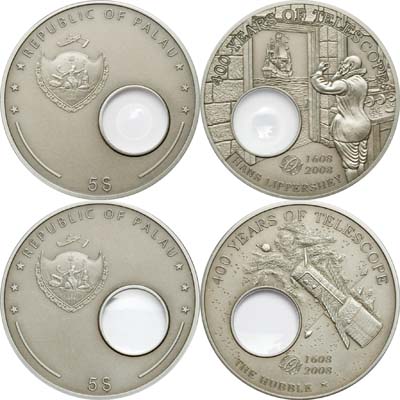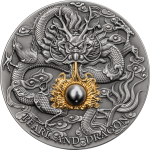Palau – 2008 – 2x 5 Dollars – 400th Ann. Invention Telescope Hans Lippershey ()
Contact for price; but do join the waitlist (click below) to be informed!
Description
In silver with an optical glass
each coin:
Metal: Silver .925
Weight: 25 g
Diameter: 38.61 mm
Quality: Antique-finish
Mintage: 1’608 pcs.
The optician Hans Lippershey (1570-1619) is assumed to be the inventor of the telescope. In 1608 he petitioned for a patent for his lens telescope (spyglass) at the Dutch authorities and in the enclosed letter he declared the exact functions of this instrument. This is the first document referring to the refracting-telescope whose light is refracted and concentrated on two lenses. However, a patent for his invention was not issued. Based on Lippershey?s invention Galileo Galilei built his own spyglass with which he explored the moon and the galaxy. His published outcomes made him famous at one stroke and put Lippeshey?s invention in the background.
The preliminary ultimate technical utilization, which is based on Hans Lippershey?s invention, is certainly the Hubble Space telescope. Since 24.4.1990 the telescope orbits the earth at an altitude of 570 km and with a speed of 28.000 km/h. It transmits about 120 gigabytes of scientific data to the earth weekly which are evaluated in the laboratories of NASA, universities and observatories. The Hubble is 13.2 meters long, weighs 11 tons and has a diameter of 4.2 meters. The primary mirror has a diameter of 2.4 meters and weighs 828 kg.
The light sensitivity reaches from ultraviolet to infrared (115-2500 nanometres). The required energy for operation is 2800 watt and is gained by means of solar elements. Towards the end of 2008 a fourth maintenance visit is scheduled. Thereby the operation of the 1.5 billion dollar Hubble is possible until 2013. By then Hubble?s successor, the telescope ?James Webb? should be ready for operation.


